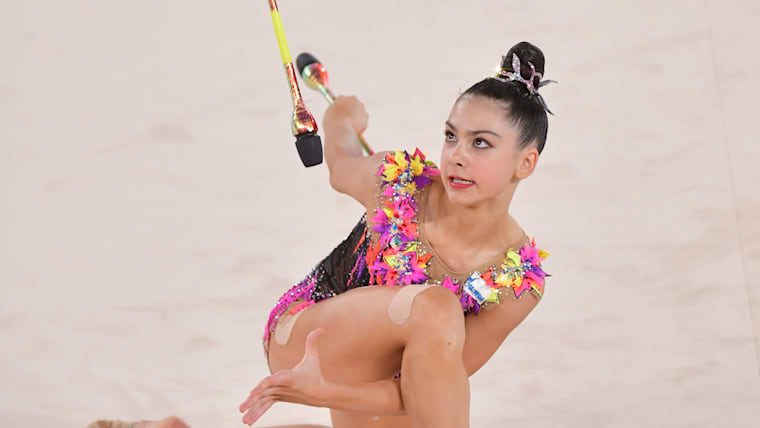The 2025 NFL Draft: A Frenzy of Strategy, Prospects, and Trade Talks
As the 90th NFL Draft kicks off on April 24, 2025, at Lambeau Field in Green Bay, Wisconsin, the football world is abuzz with anticipation. Months of speculation, mock drafts, and scouting reports have culminated in a high-stakes event where teams aim to reshape their rosters with the next generation of talent. Discussions around the 2025 draft are dominated by debates over quarterbacks, elite prospects like Cam Ward and Travis Hunter, and strategic trade talks, particularly among teams like the Tennessee Titans, Cleveland Browns, and New York Giants. This essay delves into the key narratives driving the draft buzz, exploring top prospects, team needs, and the trade rumors that could redefine franchises.
The Quarterback Conundrum: Ward, Sanders, and Beyond
No position draws more scrutiny in the NFL Draft than quarterback, and 2025 is no exception. The Tennessee Titans, holding the first overall pick after a dismal 3-14 season, are widely expected to select Miami’s Cam Ward, a dynamic passer who has surged to the top of draft boards. Analysts like Daniel Jeremiah and posts on X suggest Ward’s blend of pocket presence and playmaking makes him a near-lock for No. 1, with the Titans opting to build around a franchise quarterback rather than trade down.
However, the quarterback landscape is far from settled. Colorado’s Shedeur Sanders is a polarizing figure, with evaluations varying widely. Some scouts praise his poise and accuracy, but others, including a veteran coach cited by The Athletic, question his ability to translate to the NFL due to his tendency to take sacks in college. The Giants, Browns, and Raiders, picking at Nos. 3, 2, and 6, respectively, are reportedly eyeing Sanders, with the Giants hosting him for a private workout alongside Alabama’s Jalen Milroe and Louisville’s Tyler Shough. The New Orleans Saints, at No. 9, are also in the mix, with ESPN’s Draft Day Predictor giving Sanders a 27% chance of landing there, especially given uncertainty around Derek Carr’s 2025 availability due to a shoulder injury.
The depth of the quarterback class adds intrigue. Ole Miss’s Jaxson Dart, Alabama’s Jalen Milroe, and others like Texas’s Quinn Ewers and Ohio State’s Will Howard are projected for Day 2, creating dilemmas for teams like the Pittsburgh Steelers, who lack a second-round pick and may need to trade up to secure a signal-caller. Mock drafts vary wildly, with some, like Charles Davis’s, projecting only one quarterback (Ward) in Round 1, while Eric Edholm forecasts four, highlighting the uncertainty that makes this draft so compelling.
Elite Prospects: Hunter, Jeanty, and Carter
Beyond quarterbacks, the 2025 draft boasts generational talents drawing significant attention. Colorado’s Travis Hunter, a two-way star at cornerback and wide receiver, is a focal point of trade discussions. Teams like the Browns, Giants, and Patriots, picking in the top four, are fielding calls from others eager to move up for Hunter, whose 6-foot-1 frame, 4.40-second 40-yard dash, and versatility make him a potential All-Pro. Boise State’s Ashton Jeanty, a running back with explosive contact balance, is another name generating buzz, with mock drafts placing him as high as the top five for teams like the Jaguars, who seek to boost their offense around Trevor Lawrence.
Penn State’s Abdul Carter, an edge rusher with a lightning-fast first step, rounds out the draft’s elite tier. Analysts like Mel Kiper Jr. and Field Yates rank Carter among the top prospects, with teams like the Chicago Bears (No. 10) considering him to fortify their defense. The depth at defensive line is notable, with over 10 prospects potentially going in Round 1, a stark contrast to 2024’s draft, where no lineman was picked until No. 15. These players, alongside tight ends like Michigan’s Colston Loveland and Penn State’s Tyler Warren, are fueling discussions about whether teams will prioritize playmakers or trench players.
Trade Rumors and Strategic Maneuvers
Trade talks are a cornerstone of the 2025 draft buzz, with the top 10 picks generating intense speculation. The Browns and Giants, at Nos. 2 and 3, are fielding calls, with Hunter as a primary target for teams looking to trade up. The Giants have also contacted the Titans about moving to No. 1, though Tennessee’s decision to stay put and select Ward has cooled those talks. The Houston Texans, under GM Nick Caserio, are making calls to jump into the top 10, continuing their aggressive draft strategy after trading up for C.J. Stroud and Will Anderson Jr. in 2023.
The Saints are exploring a move into the second round to address their quarterback needs, while the Vikings, with only four picks, face pressure on GM Kwesi Adofo-Mensah to maximize value, possibly by trading down. The Patriots, at No. 4, are weighing whether to trade back to secure an offensive tackle like LSU’s Will Campbell or Missouri’s Armand Membou, with ESPN’s Draft Day Predictor estimating an 80% chance one remains at No. 7 but only 26% at No. 9. These maneuvers reflect the draft’s high stakes, where a single trade can alter a franchise’s trajectory.
Team Needs and Draft Philosophies
Each team’s draft strategy is shaped by pressing needs and long-term goals. The Titans, Browns, Giants, Raiders, and Jets all face quarterback questions, with the Daniel Jones era ending in New York and Cleveland grappling with Myles Garrett’s trade request, which could elevate their need for edge rushers. The Bears, at No. 10, have multiple options, from Jeanty to an edge rusher like Carter, as GM Ryan Poles seeks to protect Caleb Williams and bolster the defense. The Cowboys, at No. 12, are eyeing wide receivers like Arizona’s Tetairoa McMillan to pair with CeeDee Lamb, though owner Jerry Jones’s admiration for Texas’s Matthew Golden could sway their pick.
Teams are also balancing immediate needs with best-player-available philosophies. The Chargers, with 10 picks, may target a playmaker or trench player at No. 22, while the Packers, uncertain about Jaire Alexander’s future, could select a cornerback like Ole Miss’s Trey Amos. The draft’s depth at positions like defensive line and tight end allows flexibility, but as The Athletic notes, evaluating a prospect’s character—often the difference between a boom and a bust—remains the hardest part of the process.
The Broader Context: A Draft Like No Other
The 2025 NFL Draft is unfolding in a unique context. Hosted in Green Bay, a departure from the traditional Radio City Music Hall, the event continues the NFL’s trend of showcasing team cities. Fifteen prospects, including Hunter and Ward, will attend, adding to the spectacle. Meanwhile, the draft coincides with a busy sports calendar—baseball season, NBA and NHL playoffs, and the Kentucky Derby—amplifying its cultural resonance.
Analysts like Daniel Jeremiah note this draft’s unpredictability, with less certainty than in previous years, making it a “fun weekend” for fans and teams alike. Mock drafts from ESPN, NFL.com, and The Athletic reflect this volatility, with projections shifting daily based on new intel. X posts from insiders like Adam Schefter and Ian Rapoport underscore the real-time nature of the buzz, with trade rumors and prospect evaluations dominating conversations.
Conclusion
The 2025 NFL Draft is more than a player selection process; it’s a crucible of strategy, hope, and transformation. Discussions center on quarterbacks like Cam Ward and Shedeur Sanders, whose futures could define franchises, and versatile stars like Travis Hunter and Ashton Jeanty, who embody the draft’s elite talent. Trade rumors, from the Browns and Giants to the Texans and Saints, add layers of intrigue, while teams navigate complex needs in the trenches, secondary, and skill positions. As Green Bay hosts this pivotal event, the buzz reflects a universal truth: the draft is where dreams are realized and legacies begin. With every pick, the NFL’s future takes shape, one prospect at a time.

.jpg)
.jpg)
.jpg)




